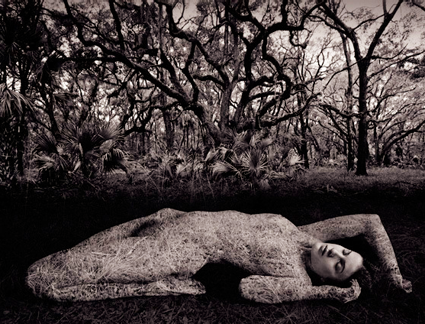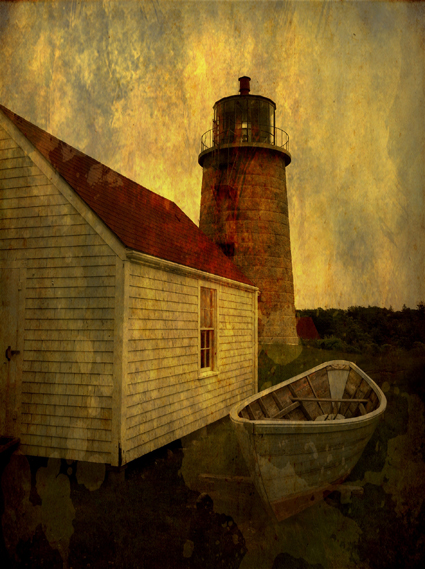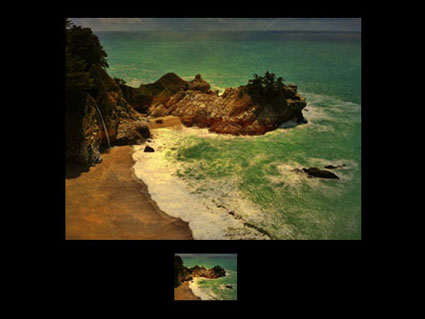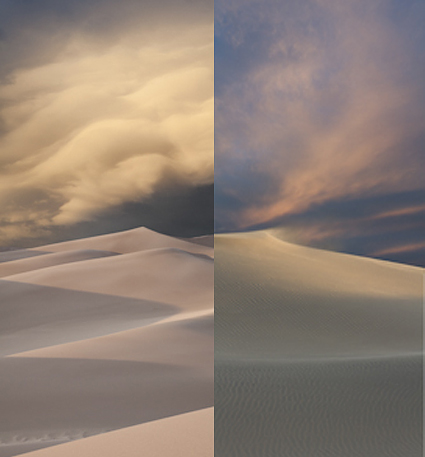
Jerry Uelsmann’s 1983 nude is a very influential photograph for me. It makes direct what is typically only implied in some ‘straight’ photographs – that mankind is not separate from nature. The transparent merger of figure and ground is poetically rich in so many ways and on so many levels.
No matter how subtle, traces of color change both visual and psychological dynamics in an image. Choice of paper (the color of the white) and toning (the color of highlights, midtones and shadows) can offer both technical and expressive opportunities. The warm toning of the print in my collection seems particularly appropriate. It’s not a heavy toning, but the print is definitely not neutral. The red of the warm tone seems appropriate for flesh. It gives the image a more approachable feeling, perhaps even a touch of romanticism. It makes the subject seem nearer to the viewer; a cooler color would seem more distant. It changes the impression of ambient temperature and time of day; a cooler color would seem closer to winter and twilight or dawn.
The image is also clarifies the differences between analog and digital processes. The substantial burning/darkening at the top of the print hold the eye in the image longer and minimizes what could be distracting area of contrast if it were brighter, but the way the burning reduces midtone and shadow detail in the region calls attention to technique, where it could be minimized or eliminated in a digital process. I wonder if this image were remastered digitally if the artist would decide to reveal traces of grass in the face, perhaps not as much as is revealed in the body or if an attempt would be made to maintain the volumetric aspects of the body where it is? Neither of these technical considerations diminish the work. We know the artist is working within the limits of a particular medium – masterfully. Still, asking these questions and making comparisons and contrasts with other possibilities offer us more insight into the artist’s vision at large and what he his trying to communicate more specifically in this visual statement. This is only one of so many other reasons why media matters.
(There’s a lot to be learned from looking at originals, which is why we look at masterworks from my collection in all of my digital printing workshops.)
Find my comments on other Masterworks In My Collection here.
Learn more in my digital printing workshops.






